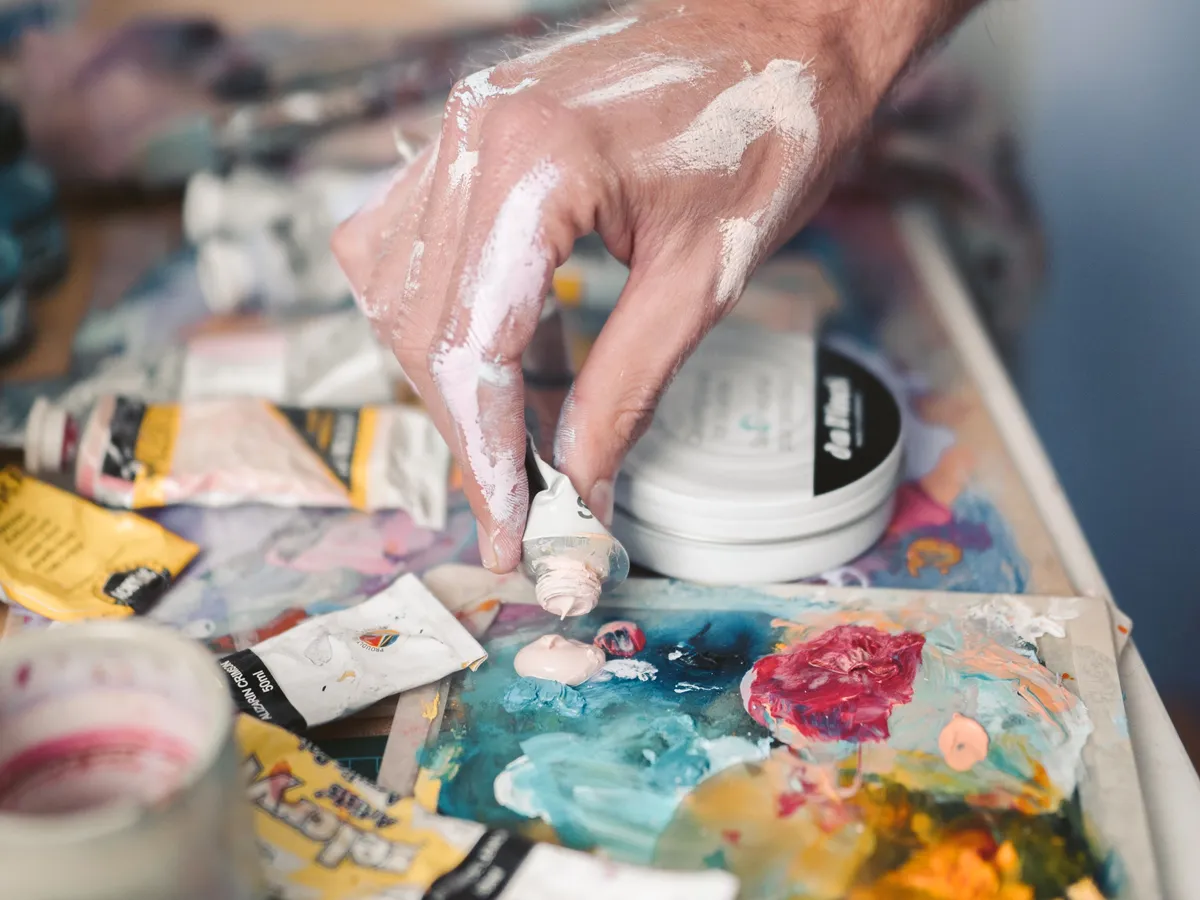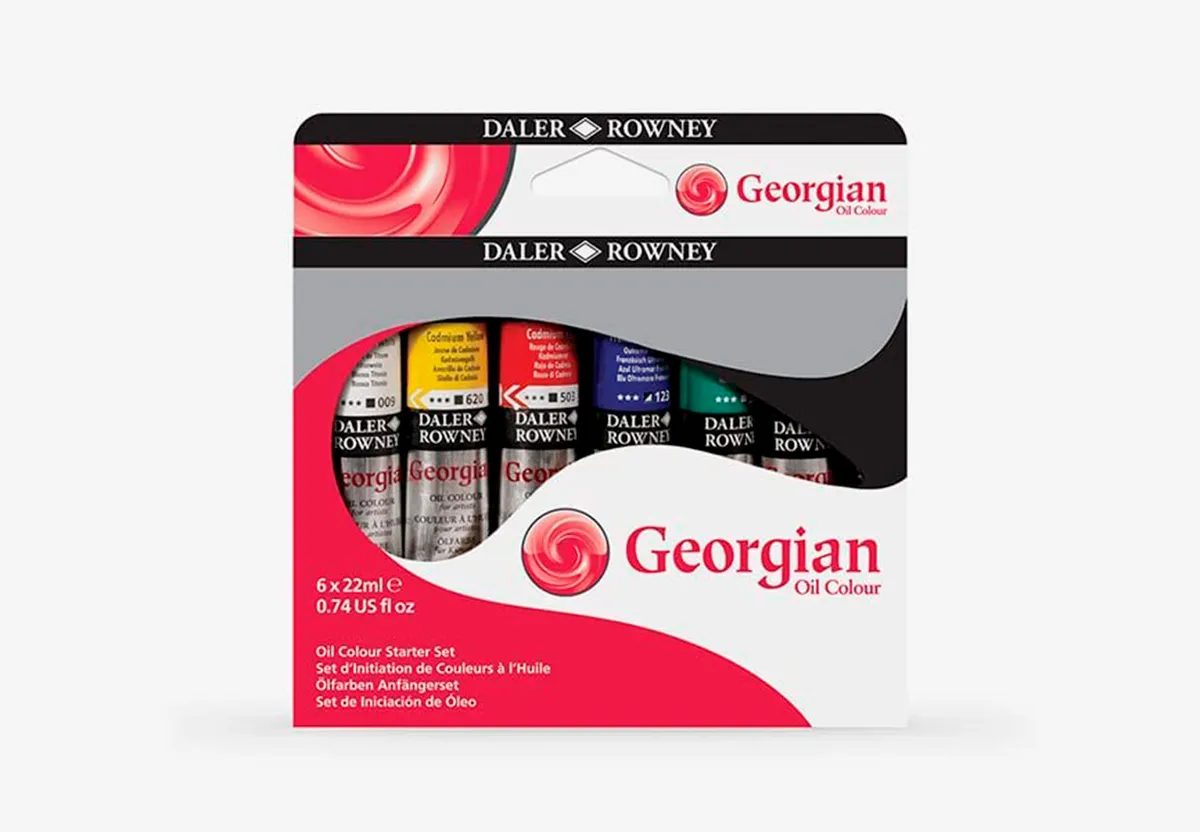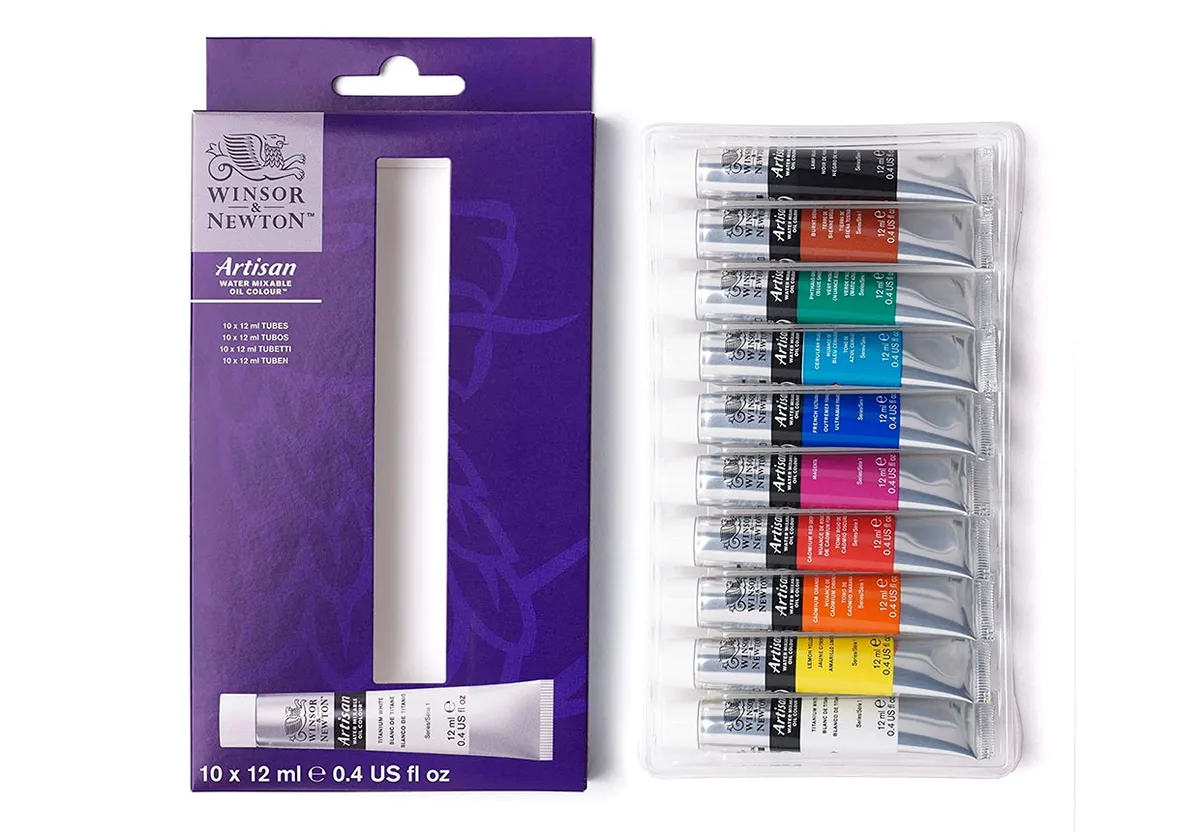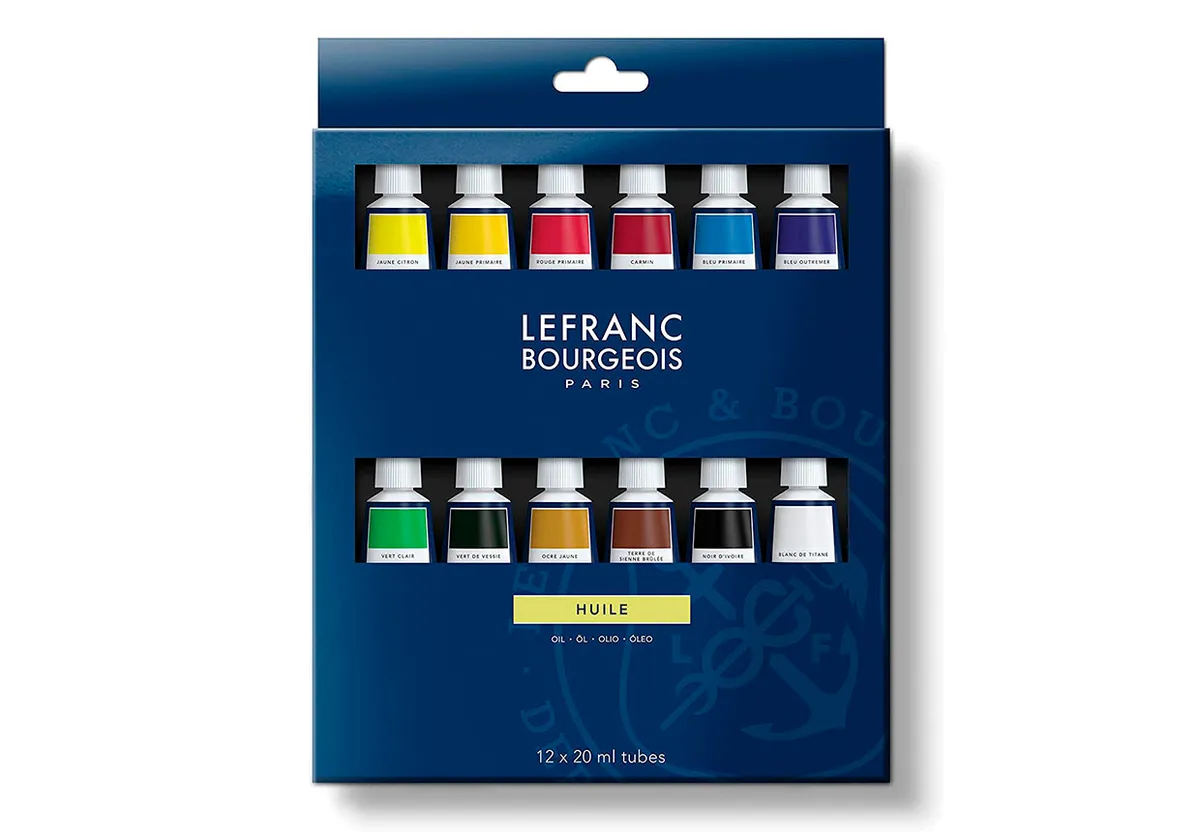Oil paint has been used by artists for many long centuries, and not without good reason. Rich, lustrous and versatile, it’s the undisputed granddaddy of paints, and every serious painter at some time should give it a go. But if the thought of trying out oil paint for the first time is a little intimidating, you’re not alone.
It’s not a medium without its challenges, that’s for sure. You’ll need to spend a bit on a variety of materials to get started, some of which are toxic and should be handled with care. This makes oil painting unsuitable for kids younger than 16. Oil is a slow-drying medium, so you might also find your patience tested. Oh, and it has a tendency to get very, very messy.
But fear not: we’ve put together a guide to help you get to grips with oil painting. Read on for a lowdown on what you should expect from oil paint: its strengths, its challenges, and all the essential equipment you’ll need. If you'd like to try other mediums, you can also take a look at our complete guide to acrylic paint, watercolour painting for beginners guide, how to use oil pastels guide or our beginner's guide to gouache.
Advantages of oil paint
Firstly, there’s that drying time. Oil paint will dry in anything between a few hours and - no, seriously - several years. It simply depends on how thickly you apply it, and how oil-rich the paint is. This gives you the joys of wet-in-wet painting. In a single session of painting, you can keep your picture in a wonderful state of flux, blending, smudging and reworking as you go.
The second major advantage of oil painting is that, unlike acrylic, watercolour or gouache, it doesn’t change colour when it dries. This, along with that slow drying time, gives you the luxury of mixing colours decisively and with care. Indeed, you can cover your palette in a host of pre-mixed colours before you start on your painting. This is something lots of portrait painters do, perfecting all those tricky flesh tones in advance.
Disadvantages of oil paint
The first problem with oil paints are the toxicity of the solvents that you’ll need to use, for both thinning your paints and for cleaning your brushes. These spirits are flammable and need to be stored away carefully, and they’re also highly toxic. They can also be an irritant to your skin, which is why lots of artists either wear disposable gloves or use barrier cream.
Oil painting involves a fair bit of setup, and lots of clearing up too. You might want to down tools and flee from your workspace after a hard session of painting - but your brushes will need thorough cleaning: first in turps, then with soap.
Then there's the issue of all that wet paint. Often, artists who are new to wet-in-wet oil painting overwork their painting, loading too much paint onto the canvas, and blending bright colours until they’re a dull mud. If you’ve made a mistake while oil painting, you’re far better off scraping the paint off with a palette knife or rag than going over it.
Oil paint techniques
You only need to step into an art gallery (in normal times) to see the sweeping range of ways in which you can employ oil paint. Thick, thin, opaque, translucent: providing you know some basic principles, you can work it whichever way you like. You can apply it with a brush, or a palette knife, or even a rag.
The Impressionists, for example, typically painting alla prima, or all at once, working wet-in-wet. By contrast, artists of the Renaissance would build their paintings in sumptuous layers of medium-rich glazes, letting light reflect through each layer and giving their images an incredible luminosity.
One thing you’ll need to keep in mind is the ‘fat-over-lean’ rule, something we’ll admit can be tough for beginners. If you’re using oils in multiple layers, you need to make sure each layer is just as, or more oily, than the next. This is because the paint dries more slowly with oil, so if layers dry before those below, you’ll find your images cracking - perhaps not straight away, but over the course of time.
Yes, this stuff takes practice. But if you stick with oil painting, and grit your teeth during a few inevitable misadventures, the rewards will be more than worth it.

How to start oil painting: essential equipment
The basics
Get yourself an old rag, for wiping any mistakes off your painting. It’s also worth getting a big load of paper roll - ideally the blue stuff that’s extra-tough. Oil paint has a habit of travelling: from your brush, to your hand, to the doorknob, to the handle of your kettle. Make sure you’re wearing overalls or old clothes. And get a window open!
Oil paint
You’re a beginner, so the smart thing to do is buy a starter set of oil paints. Anywhere between six and ten paints is fine, but don’t buy anymore, unless you’re experienced in colour mixing and know what you’re doing. The paints you’ll definitely want on your palette are white, yellow, red and blue, and an earth colour like raw sienna or burnt umber wouldn’t go amiss.
Here are a few recommended sets to help you get started:
Daler Rowney Georgian oil starter set

We like Daler-Rowney’s six-colour Georgian starter set, which should serve you well in your maiden voyage into oil painting. It includes a good selection of richly pigmented colours, which will be suitable for any subject matter including landscapes and portraits. The paints are long-lasting and have a beautiful buttery consistency, making them a joy to use. The colours are permanent and won’t fade over time, which is ideal if you’re planning to display your paintings. They're excellent value for money too.
Winsor and Newton water mixable oil paints

If you're new to oil painting (or not a fan of traditional oils), water mixable oil paints can be a great alternative. They dry a lot faster than conventional oil paints and don't have such a strong odour. You don't need to blend them with anything other than water, which makes them very easy to pick up if you're used to working with acrylic paints. There's no need to use harmful solvents and they can be cleaned up easily once you've finished painting.
This Winsor and Newton water mixable oil paints set contains a fabulous range of colours, which are all lightfast and vibrant.
Lefranc and Bourgeois oil paint starter set

This fantastic oil painter starter set from Lefranc and Bourgeois is ideal for new painters or art students. It contains 12 colours in an array of beautiful shades. This is a good option for anyone wanting to try out oil painting. The paints are bright and colourful, with enough colours to allow you to tackle most painting projects. You can also buy additional colours separately if you run out of a particular shade or want to expand your collection of paints.
This paint set would also make a brilliant Christmas gift for the budding artist in your life.
Brushes
Like the paints, we suggest beginners don’t buy too many brushes to start with. Four or five of various sizes, both rounds and flats, should do the trick. Again, a starter set of brushes makes sense. You’ll find lots of sets online that have as many as 24 brushes for less than £20, and they look respectable enough. But for that price they will be low-quality, and are likely to malt hairs all over your painting: avoid.
We like Cass’s starter range of bristle brushes and synthetic brushes. The first will give you more textured brushstrokes, while the latter are softer and springier.
Oil mediums
Here’s where things can start to get complicated for beginners. Oil paint out of the tube is thick, stiff and hard to manipulate in that state. There are many different types of mediums to add to oils, each affecting the drying time, gloss and flow of the paint in its own unique way.
But if we were to recommend a single oil medium for beginners, it’s Winsor & Newton liquin. This is an alkyd-based medium that actually speeds up the drying time of paint. It’s jelly-like in consistency, and relatively easy to mix and handle. Just remember: don’t add any less of it to succeeding layers of paint.
Solvents
Investing in a bottle of artists’ turpentine is vital for oil painting. Don’t use everyday white spirit from the DIY store: this is filled with impurities that won't do your painting any favours over time. More importantly, artists’ solvents don’t smell nearly so strongly, and are less hazardous, but you’ll still want to make sure your workspace is well-ventilated.
Turps is great for cleaning the paint out of your brushes, but it can also be used to dilute the paints on your palette. Many artists start their paintings with an initial underpainting of paint thinned with turps, since it dries after just a few hours.
Palette
Palettes come in a variety of shapes, sizes and materials. There are plenty of traditional-style, wooden thumbhole palettes out there; some artists, however, prefer a square palette that stays on their tabletop, which are often made of glass or perspex.
You’ll find palettes out there for less than £10, but we love New Wave’s ergonomic range of palettes, which come with an indentation on one side so it rests snug against your torso.
To save money, you can always repurpose an old piece of glass, and spray-paint it white, grey or another neutral colour.
Support
The vast majority of artists work on canvas. You pick up pre-prepared canvases at a variety of high-street shops: they’re not terrific quality, but should be fine for beginners. Art stores like Cass stock ready-made canvases of a better quality.
You can also paint on sheet wood like MDF or plywood that’s been primed with gesso, though you’ll need to attach them to frames in order to hang them. Canvas pads are great for sketches and quick ideas.
And for later…
In time, you’ll grow used to oil paint and you might want to add some additional colours to your palette: violet, green, both cool and warm versions of the primaries. You’ll also want to start trying out those different mediums: linseed oil, walnut oil, stand oil.
But for now, we hope you’ve enjoyed our guide to oil painting for beginners – best of luck!
Looking for more artistic inspiration? Take a look at our easy watercolor painting ideas.


